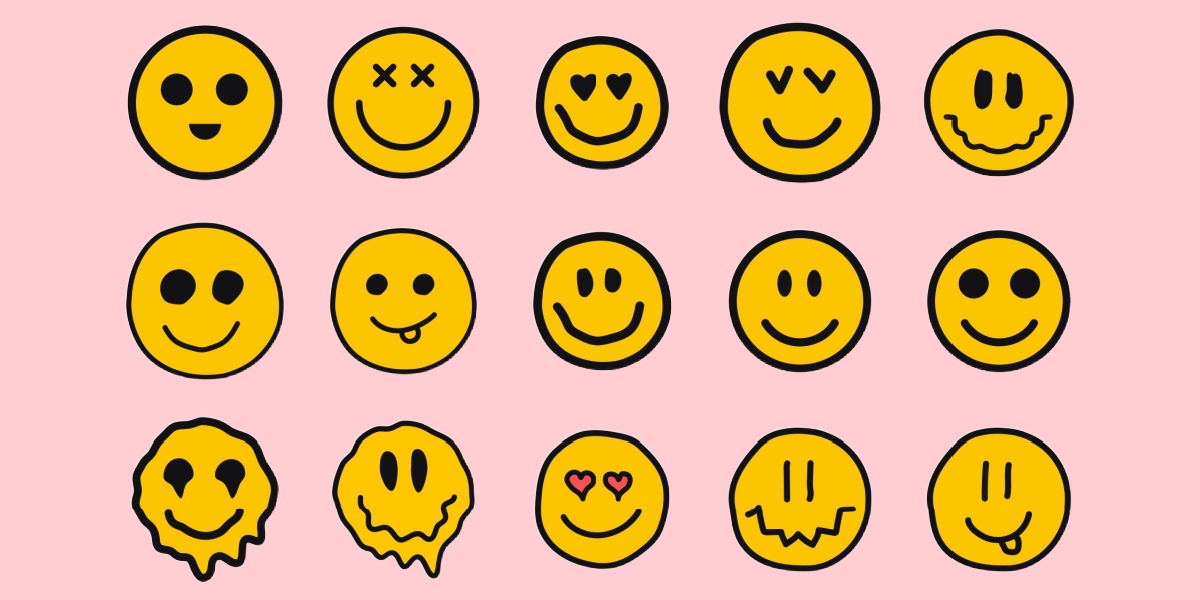From workplace emails to social media posts, digital communication has become ubiquitous around the world, with emojis playing a key role in how we talk to each other. These visual cues serve as a quick way to convey ideas and concepts in written messages or to add further context without elaboration.
However, emojis have also been adopted in the context of recreational drug use, where dealers and users employ them as a coded language to discuss drugs, quantities, and even the potency of supplies. This can make it challenging for concerned individuals to determine if a loved one is involved in substance use.
This article aims to clarify the most frequently used emoji drug codes, explaining their origins and meanings.

What are emoji drug codes?
Since the days of prohibition and earlier, slang terms and cryptic language have been used to discuss illegal drug activity, such as production, trafficking, and purchasing of substances. This shorthand was primarily used to deceive law enforcement, but evolved to become part of the lingua franca of people buying and selling illicit substances.
Today, most of these communications happen online, either through social media platforms or messaging apps, with buyers of drugs rarely having to speak to dealers in person. As the means of buying drugs have changed, so has the code used to talk about them in secret. Enter the world of emojis.
Emojis originate from Japan (“E”= image, “moji”= character) and were first created in the late 90s.[1][2] They gained global popularity in the early 2010s, becoming widely used on communication and social media apps such as Instagram, Facebook, Twitter, and WhatsApp.[3] For the most part, emojis are used as exclamations, providing a visual representation for the tone of a message.
However, they have gradually been ingratiated into our everyday lexicon, with a careful combination of images able to replace whole sentences with no nuance lost. This has led to emojis being widely used between buyers and dealers when discussing drugs, with their own set of meanings and translations.
Emoji drug code explained
Without prior knowledge of what emojis mean in relation to drugs, they may appear relatively harmless. Here we have broken down how emojis translate into drug language, with an explanation of why certain emojis are used for different drugs, as well as general drug-related emojis. Some of these emojis are supplied by the DEA's PDF list, while others have been sourced through independent research.[4]
Prescription opioid emojis
| Emoji | Emoji Name | Explanation |
|---|---|---|
| 💙 | Blue Heart | One of the most frequently supplied and sought-after illicit prescription opioids is Percocet (oxycodone), which normally comes in the form of small blue pills (M30). The color blue is therefore commonly used to denote prescription painkillers. |
| 🅿️ | P Button | See above. |
| 🟦 | Blue Square | See above. |
| 💊 | Pill | The pill emoji is used in multiple instances to refer to any prescription or counterfeit pill, or even as a catchall for drugs in general. |
Cocaine emojis
| Emoji | Emoji Name | Explanation |
|---|---|---|
| ❄️ | Snowflake | “Snow” has long been used as a synonym for cocaine, owing to both having a white, powdery appearance. The snowflake, snowman, and snowcloud emojis are often used to represent cocaine. |
| 🌨️ | Snow Cloud | See above. |
| ⛄ | Snowman | See above. |
| 🦜 | Parry/"Perico" | “Perico” is used to describe cocaine in parts of Southern, Middle, and Northern America. This is due to increased sociability and talkativeness, like the chirping of a parrot, being a common side effect of cocaine. |
| 🎱 | 8 Ball | The 8-ball emoji is used in drug communications to refer to a specific weight: 3.5 grams or an eighth of an ounce. This weight is most commonly used when purchasing cocaine or methamphetamine. |
| 🔑 | Key | The “key” emoji may have two meanings when referring to cocaine. The first relates to cocaine commonly being snorted from a key, often at parties or clubs. The second relates to weights being sold, as a “key” can also be shorthand for kilo. |
| 🐡 | Blowfish | Cocaine has been referred to as “blow” since the late 70s and early 80s, and the blowfish and blow face emojis are the most current evolution of this nickname. |
| 🌬️ | Blow Face | See above. |
| ©️ | Copyright | “C” is the simplest and most common shorthand for cocaine, and while not the most subtle, some use the copyright emoji to refer to cocaine. |
| 🩷❄️ | Pink Cocaine/Tuci/2CB | Pink cocaine, also known as tuci or 2CB, is a synthetic hallucinogen that also has stimulant effects. The drug has surged in popularity in the last decade, especially among partygoers and on the club scene. |
| 🇨🇴🇵🇪🇧🇴 | Colombia, Peru, Bolivia, and other flags | These countries are often linked to cocaine as they are connected with the drug’s production and origins. Other flags may be used to signify another origin. |
Meth emojis
| Emoji | Emoji Name | Explanation |
|---|---|---|
| 💎 | Gem Stone | The gemstone and crystal ball emojis are used to represent crystal meth, owing to the substance's glistening, crystalline appearance. |
| 🔮 | Crystal Ball | See above. |
| 💙 | Blue Heart | The color blue has become synonymous with crystal meth ever since the TV show Breaking Bad first aired in 2008. The show featured a distinctive form of crystal meth that was blue in color, owing to its supposed purity. |
| 🟦 | Blue Square | See above. |
| Ⓜ️ | Blue Metro | See above. |
| 🧪 | Test Tube | Along with the color blue, Breaking Bad also brought the concept of “meth labs” to the general public's attention. The test tube emoji may be used when talking about the production of meth, or drug production, generally. |
Heroin/opiate emojis
| Emoji | Emoji Name | Explanation |
|---|---|---|
| 🐉 | Dragon | The term "chasing the dragon" originated in Hong Kong in the 1950s to describe the intense cravings associated with low-grade heroin use. “The dragon” or just “dragon” has been used as a synonym for heroin ever since. |
| 🐲 | Dragon Face | See above. |
| 🤎 | Brown Heart | Another often used term for heroin is “brown”, owing to the substance's color. Brown hearts or squares may be used to denote heroin. |
| 🟫 | Brown Square | See above. |
MDMA/Ecstasy emojis
| Emoji | Emoji Name | Explanation |
|---|---|---|
| 💊 | Pill | While many illegal narcotics come in pill form, ecstasy is perhaps the most widely recognized. While MDMA can come in powder and other forms, ecstasy pills are the most commonly abused form of the drug. |
| ❌ | Cross Mark | At the peak of its popularity, ecstasy was often abbreviated to just “X.” Today, Xanax is more widely connected to this shorthand. |
| 🍬 | Candy | The candy emoji can also represent ecstasy pills, as the pills are also referred to as sweets or candies. |
| ❤️ | Red Heart | One of the common side effects of MDMA and ecstasy is a euphoric sense of connection and love for other people. Heart emojis are often associated with the drug for this reason. |
Xanax emojis
| Emoji | Emoji Name | Explanation |
|---|---|---|
| 💊 | Pill | The pill emoji is used in multiple instances to refer to any prescription or counterfeit pill, or even as a catchall for drugs in general. |
| ❌ | Cross Mark | While ecstasy is sometimes shortened to just “X,” Xanax has become more widely linked to the nickname in recent decades. |
| 🍫 | Chocolate Bar | Chocolate bars are used when talking about Xanax bars, which are tablets that can be broken into four doses. |
Lean/DXM
| Emoji | Emoji Name | Explanation |
|---|---|---|
| 🍇 | Grapes | Lean is often also referred to as purple syrup, as the final combination of prescription painkillers, cough syrup (DXM), and soda is typically purple in appearance. Purple emojis are frequently used to refer to lean for this reason. |
| 💜 | Purple Heart | See above. |
| 🟣 | Purple Circle | See above. |
| | Splatter | See above. |
Adderll Emojis
| Emoji | Emoji Name | Explanation |
|---|---|---|
| 💊 | Pill | The pill emoji is used in multiple instances to refer to prescription or counterfeit pills, or even as a catchall for drugs in general. |
| ➕ | Plus Sign | The plus sign is used to denote ‘adding’ in mathematics, and its emoji is occasionally used to represent Adderall in drug lingo. |
| 🅰️ | A Button | The A button emoji can also be found in drug-related messages to refer to Adderall. |
| 🚆 | Train | “A-train” is a slightly outdated term used to refer to Adderall, signifying the similarity between the A-train that runs through New York, and the rushy side effects caused by excessive use of the substance. |
Ketamine emojis
| Emoji | Emoji Name | Explanation |
|---|---|---|
| 🐴 | Horse Face | As ketamine is primarily used as a sedative for horses, emojis depicting the animals are often used for the drug. |
| 🐎 | Horse | See above. |
| 🦄 | Unicorn | Ketamine is infamous for its intense visual hallucinations and dissociative effects. This is why the unicorn emoji is sometimes used to denote ketamine instead of just horses. |
Psychedelic emojis
| Emoji | Emoji Name | Explanation |
|---|---|---|
| Mushroom | Pilocybin, which is found naturally in certain types of mushrooms (magic mushrooms), is one of the most widely used forms of psychedelics, and the emoji can be used for both mushrooms and psychedelics as a whole. | |
| Hamsa | The Hamsa, an open-face palm with an eye at the center, is an ancient symbol used in many religions to depict the Hand of God. Its emoji counterpart is used in drug lingo when referring to psychedelics, as the Hamsa also denotes wisdom and insight linked to taking hallucinogenic substances. | |
| Face With Spiral Eyes/Cyclone | Cyclones and spirals are synonymous with pagan iconography, as is practicing psychedelic rituals and ceremonies. | |
| Eye/Eye in Speech Bubble | Eye emojis are also often used to represent psychedelics, as they signify their reputation for mind-expanding and eye-opening experiences. | |
| Pill + Mushroom | Psilocybin pills | |
| Mushroom + Chocolate Bar | Psilocybin chocolate/edibles | |
| Mushroom + Eye | 4-AcO-DMT | |
| Eye in Speech Bubble or Eye + Crystal Ball | LSD | |
| Hamsa or Eye + Dashing | DMT vape | |
| Mushroom + Drop | Psilocybin drops | |
| Crystal Ball + Drop | Liquid LSD | |
| Pink Heart | 2CB (Tuci) | |
| Pink Heart + Candy | 2CB pills | |
| Cactus | Mescaline (Peyote) |
Inhalant emoji
| Emoji | Emoji Name | Explanation |
|---|---|---|
| Balloon | Whippets/Nitrous | |
| Thought Balloon | Whippets/Nitrous | |
| Galaxy + Thought Balloon | Galaxy Gas |
Cannabis/THC emojis
| Emoji | Emoji Name | Explanation |
|---|---|---|
| Maple Leaf | Leaf emojis of any description are often used to describe cannabis, marijuana, or THC. The maple leaf is most commonly used because its shape closely resembles the leaves of a cannabis plant. | |
| Herb, Potted Plant, Four-Leaf Clover, Seedling, etc. | Leaf emojis of any description are often used to describe cannabis, marijuana, or THC. | |
| Dash Away | The dash emoji most closely resembles a puff of smoke and is used when describing any drug that is smoked or vaped to feel its effects, including THC. | |
| Maple Leaf + Candy | THC edibles. |
General drug emojis
| Emoji | Emoji Name | Explanation |
|---|---|---|
| Zip Face | A “zip” refers to an ounce of drugs, approximately 28 grams. It is believed this term comes from early marijuana sales, where an ounce was a common weight purchased and would usually be supplied in a large zip-lock bag. | |
| Plug | A plug refers to someone who sells, manufactures, or distributes illegal drugs. | |
| Money Face | The money-face, money with wings, bank, ATM, and any other emoji related to money refer to just that. Occasionally, they may be used to refer to deals or good prices as well as cash outright. | |
| Money With Wings | See above. | |
| Bank | See above. | |
| ATM | See above. | |
| Rocket | The rocket, exploding head, fuel pump, and collision emojis are used to suggest that the current supply of a substance is particularly strong or potent. | |
| Exploding HEad | See above. | |
| Fuel Pump | See above. | |
| Collision | See above. | |
| Bomb | While also used to signify potency, the bomb and fire emojis also indicate that the current supply is of high quality. | |
| Fire | See above. | |
| Mailbox | The mailbox and package emojis signify that deliveries are available. | |
| Package | See above. | |
| Droplet | The droplet is used when referring to a liquid version of a substance being available, such as liquid meth, ketamine, psilocybin, or LSD. | |
| Dash Away | The dash emoji most closely resembles a puff of smoke and is used when describing any drug that is smoked or vaped to feel its effects. |
What to do if you find emoji drug codes on your child's phone
Navigating difficult conversations about suspected drug use can be a challenging prospect, made even more daunting when it is with young people and children. Recovered's Chief Addiction Specialist, Dr. Matt Glowiak, has this advice for how to approach communicating with your children about worrying messages:
Stumbling across unfamiliar emojis on your child’s phone, especially ones linked to drug culture, can be a jarring experience. It’s natural to feel a wave of worry, confusion, or even panic. But before jumping to conclusions, take a breath. Adolescents are navigating a complex world, and while they need room to grow and make mistakes, they also require the steady presence of adults who genuinely care about their safety.
Intervening is not about control; it’s about connection and protection. If you notice signs that your child may be involved in risky behaviors like drug use, dealing, or associating with others who are, it’s time to step in. That said, reacting out of fear or making assumptions without context can damage trust. The key is to approach the situation with curiosity, compassion, and clarity.
Signs there may be a cause for concern
Watch for red flags that may signal substance involvement. These may include, but are not limited to:
- Sudden shifts in mood, behavior, or social circles.
- A drop in academic performance or interest in hobbies.
- Secretive phone habits or deleted messages.
- Physical signs like bloodshot eyes, frequent nosebleeds, or strange odors.
- Use of slang, emojis, or coded language that aligns with known drug symbols.
If you decide to intervene, start by gathering context. Research the emojis and patterns you’ve seen and consult reliable sources or professionals if needed. Then, choose a calm moment to talk. Lead with care, not confrontation. You might say, “I came across something on your phone that I don’t understand, and I’m worried. Can we talk about it?” Give your child space to respond and listen with an open heart, even if what you hear is difficult.
How to open a constructive and safe dialogue
Maintaining trust is essential. Let your child know that your concern comes from love, not judgment. Avoid surveillance tactics that feel invasive and instead build a foundation of open communication. Trust-building phrases can help bridge the gap:
- “I’m not here to judge—I just want to understand what’s going on.”
- “You can talk to me about anything, even if it’s hard.”
- “I care about you more than anything, and I want to make sure you’re safe.”
- “We can figure this out together. You’re not alone.”
When kids feel safe to talk, even about mistakes, they’re much more likely to reach out for help and make healthier choices. Thoughtful intervention can be a turning point, not just in addressing immediate concerns but in deepening the parent-child bond.
With empathy and clarity, you’re not just responding to a crisis; you’re showing up in a way that fosters healing, growth, and resilience. Remember, early intervention is key to preventing escalation into addiction. If appropriate, enlisting the support of a mental health/addiction professional is recommended.







-blog-detail.jpg?v=1738677671)
